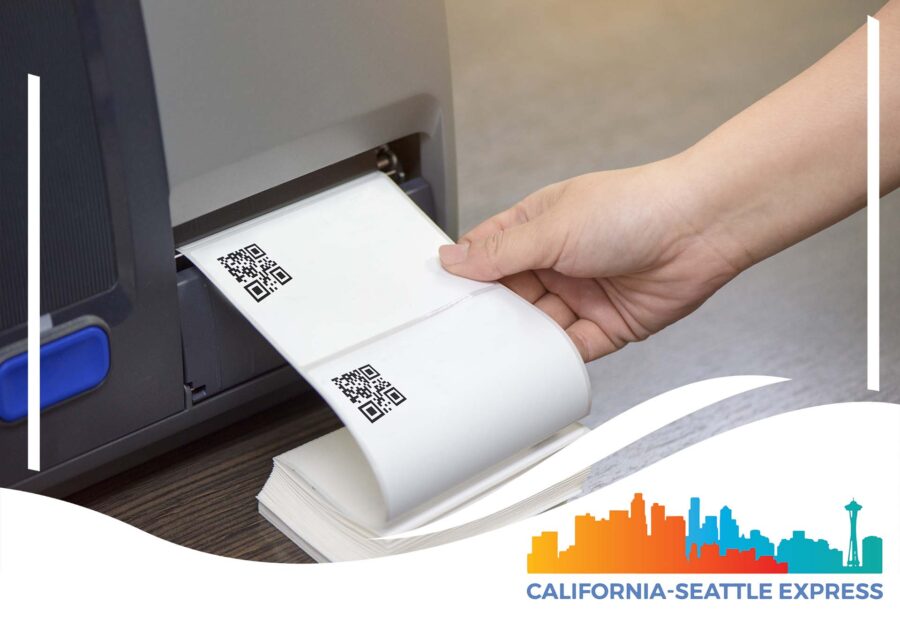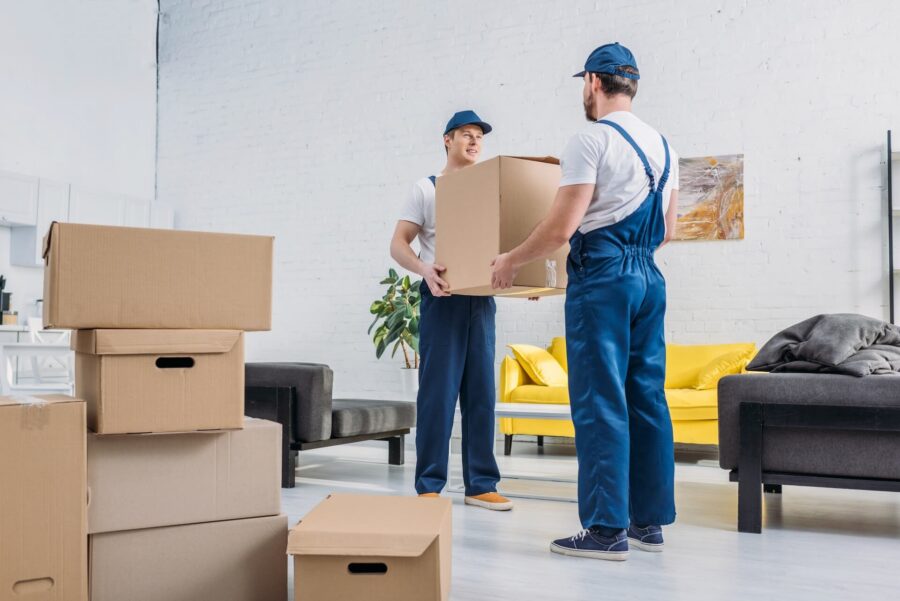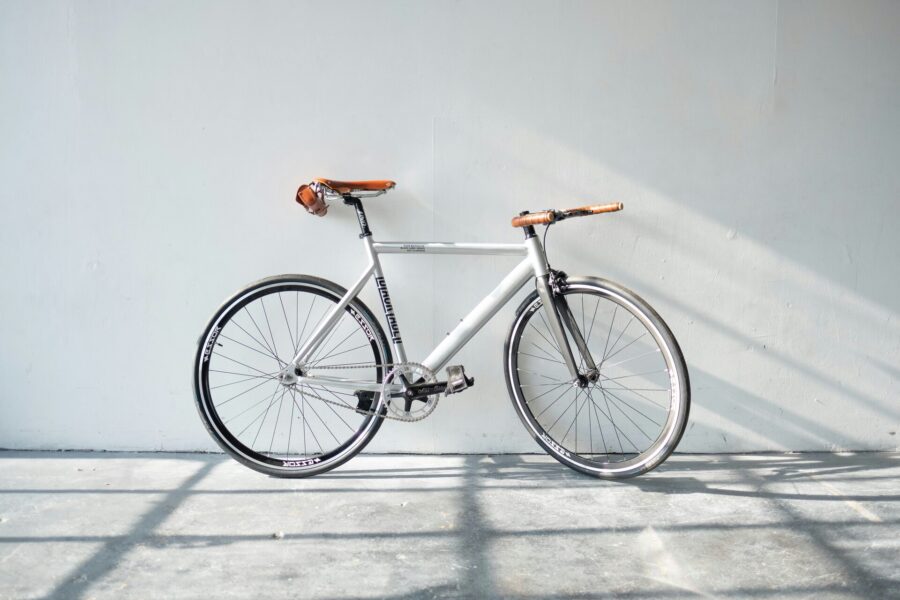Having moving labels for boxes is a great way to keep your containers organized and looking good. It is also a good way to save time when you are packing or unpacking your belongings. However, it’s not as easy to do it as it might seem. So, let’s check out how to label your boxes in the best way and have a seamless packing and unpacking process.

Having everything in order while relocating is something that needs a good organization. That’s why having all the boxes properly labeled is a must. However, you must prepare all the materials first and then proceed with the labeling system that suits you best. And not only will it help you, but the professional relocation crew will handle all the packages properly, and you won’t have to worry about having your belongings damaged during transportation.
Why Is Having Box Labels for Moving So Important?
Think about it. Your new home has been in complete disarray for days. You are on the verge of tears as you search through a stack of “nondescript,” anonymous moving boxes for your possessions. Are you equipped to handle such an event? We assumed not. The next step is to identify the boxes as you proceed when packing. Now, imagine you’re relocating to a smaller home, and with all the unmarked boxes, the unpacking and settling in your new place will take days and maybe weeks.
So, after you find a trustworthy cross-country moving company, start gathering all the long-distance relocation tips you can find. Not only will you have the best possible experience, but you could also manage the last-minute move like a pro if needed.
You will save a lot of time and frustration later on when attempting to find a certain item if you choose an easy-to-understand code system for expressing what’s in the container and where it must go. By instructing the movers which box goes in the truck first, you will also be doing them a favor.
What Do You Need to Get Before You Start Labeling?
When you’re planning a move and have the best labeling system, it’s important to make a list of all the materials you’ll need before you get started. This shouldn’t be a problem if you already plan to create a to-do list because you can easily add the list of materials. So, besides booking the long-distance moving services that include professional packing service as well, you’ll have to decide what to keep.
Once this is taken care of, proceed with the rest of moving day preparations and take care of all things people forget when relocating. And surely, labeling materials are among those things. But, when you have everything put down on your list, you can be sure you have everything on hand and won’t have to stop in the middle of your project to run to the store for supplies.
Here are some of the most important ones, and yes, getting all these supplies can cost a fortune. However, the good news is that you can find most of them on Craigslist and save some money. Check what you should put on your relocating to another state checklist:
- Cardboard or other storage containers,
- Paper tape,
- Colored paper,
- Pens and markers,
- Sheet of papers,
- Clear or colored tape.
Should You Make an Inventory List?
Make sure you take the time to make a thorough inventory record of everything you possess before you begin the packing process and a long-distance moving company comes to your home. This is important to do because there are some items long-distance movers won’t move. So, why lose your precious time on something you just can’t transport with the professionals?
And the inventory list is there to make it much simpler to keep track of the belongings you want to pack, but you’ll also have complete information and a picture of the item in case it breaks or gets damaged throughout the moving process.
Car Shipping Services
We can ship your vehicles using the best freight options available. Your car will be moved safely and securely and arrive as planned.
Storage Services
Looking for storage space while you get settled? California-Seattle Express provides 30 days free storage with your move.
Packing Services
Our professional packers have methods and techniques to ensure all your items are intact during and after the move.
Create the Best Inventory List Effortlessly When Moving Across the Country
Creating an inventory list may seem like a big task to do, but it doesn’t have to be, especially if you have more than just one good reason to move. Here are some tips to help you create the best inventory list possible:
- Start early – The sooner you start, the better. This will give you plenty of time to go through all your belongings and add them to the list.
- Be thorough – It’s important to be as detailed as possible when creating your inventory list. Include everything, no matter how small or unimportant it may seem.
- Use a template – There are many different ways to create an inventory list. You can use a template or create your own. Either way, make sure the list is easy to understand and follow.
What Type of Labeling System Should You Use?
There isn’t just one ideal strategy to use when packing like there isn’t just one relocation tip. Several tested labeling techniques can be used together without increasing the chance of misunderstanding. Labeling your moving boxes will benefit you when it comes time to unpack them as well as the professional movers on moving day. Prepare your packing and labeling materials, and let’s get to work!
Labels by Room
People who have already moved can confirm it, and you’ll get the same advice from professional cross-country movers – packing room by room surely is the most efficient way to get your belongings prepared for the move. It has been demonstrated that using just one color to write the labels still makes unloading and unpacking a breeze. Make sure to glue the identical label on the box’s front, back, and even the top of the packing.
Once more, this will make it much easier for the movers to deliver your items to the correct room. There is nothing more annoying than trying to move a big box because the nicely written sign is on the other side while circling it in a hurry to find its label.
Color Coding System
Unpacking will become a breeze if your boxes are labeled with different colors. The room-by-room labeling method works amazingly with the color-coded labeling system since you can choose a different color for each room.
As a precaution, mark each moving box with “Kitchen” in yellow permanent marker and “Living room” in blue. This will help the movers unload each box in the proper location. Use high-quality waterproof marker pens to prevent smudged scribbles on moving days if it rains or snows.
Secure the packages with the same color tape, or use clear tape to put on the same color paper to “reinforce” your color-coded labeling method. And in the video below, you can see how to actually do it.
Number Code Labels
Recall how we suggested you make an inventory list. Well, the inventory list is a part of the number code labeling system. List the room and the number that corresponds to each item, along with the box number that you packed it in. For instance, it will be simple to return to your list while you unpack boxes one through five that go in the kitchen.
And you rush to box number three to get the kettle out if the first thing you want to do is prepare a good cup of tea. It won’t hurt if you write “Kitchen” in red and make it very apparent because the movers still need to be told that box three belongs in the kitchen.
Priority Code Labels
This labeling scheme might incorporate a few house removal ideas. For instance, it might decide which box is loaded last and which is loaded first in the truck. The packers will be able to prioritize which goods will exit the vehicle first and be placed in the appropriate room in this manner.
Therefore, you may designate a box as having a high priority by using an “H,” a medium priority by using an “M,” and a low priority by using an “L.” This way of labeling your boxes will stop you from unpacking your bridal gown first and then searching through the stack of moving boxes for your children’s school supplies. Check out our packing guide to find out how to properly pack paperback editions of books for a move or storage.
Labels by Items
Only in part does organizing your belongings by item work. The technique also can’t take the place of other labeling systems. For example, you can pack your children’s winter clothes in a big trash bag and group soft items like beds, blankets, carpets, and cushions together in a box. Using paper tape, you may label plastic bin bags or other containers.
Your camping gear is another example, which can be neatly packed and labeled with an additional “L” for low importance. You can also place all little electrical devices that should be handled carefully in a dedicated box.
What Should Moving Labels for Boxes With Fragile Items Include?
You must appropriately wrap and identify your breakables and fragile goods, regardless of how you choose to pack them – room by room, number, or with colored markers. The same goes for risky goods packaging and labeling. In fact, one of the biggest relocation mistakes is not properly labeling the packages.
Whether it’s glass, dish, or mirror, wrap each item separately in wrapping paper before placing it securely into the box. To fill in any spaces between the objects and the box’s sides, use a lot of bubble wrap or discarded towels and clothing.
Clear box labels are required for every box the moving firm will handle. Make sure you label the packs with the words “Fragile” or “Handle with care” on all sides. This will remind the movers to avoid getting the containers wet. Additionally, make sure the label makes it obvious which box’s side is looking up and which one is facing down.
Don’t Forget About the Essentials
Packing a box of essentials that you can get to right away on the first night at your new house makes sense. You decide what it will contain, but typically individuals pack things that they use every day or that make them feel at home.
Depending on the requirements, interests, and lifestyle of your family, you might pack a DVD, your favorite cheese crackers, toiletries, medications, snacks, and pajamas. Whatever you pack, ensure to label this package with the appropriate information to avoid the possibility of spending hours hunting for it once you get to your location.
For instance, you could use a special color that you have never used yet for labeling the following necessities:
- First Night Box,
- First off the truck,
- High priority,
- Handle with care.
Will Having Labels for Moving Boxes Help Your Movers?
If you’re hiring professional movers from Seattle to California to help you with your upcoming move and make it efficient, you might be wondering if labels for moving boxes will make the process easier. The answer is yes, and it’s one of the most useful moving day tips you can get. Having labels on your boxes can help your movers know which items go where, and it can also help them keep track of everything as they’re loading and unloading.

Will Labels Speed up the Whole Unpacking Process?
So, you’re here right now. And there is a ton of unpacking to do. The best course of action is to remain composed and take your time. You should keep this in mind, no matter if you are relocating to a new city alone and figuring out how to live on your own or not. If you’ve done a good job of labeling and packing, you’ll discover that unpacking can even be enjoyable.
After all, the purpose of all this preparation work you had to perform was to make unpacking easier. Simply apply the labeling system once more and begin unpacking, going from high to low priority, room by room. This way, you’ll know exactly where to look for the important documents and everything else. Enjoy painting your new home’s blank canvas gradually and stress-free by taking regular pauses. And in the video below, you can check how to unpack in the best possible way after the move.
Keep Everything Organized and Move Like a Pro
Organizing and labeling your boxes is one of the most important things you can do when preparing for a move. It will make unpacking much easier and help ensure that nothing gets lost in the shuffle. So, take a bit of your time and help yourself and the professional helpers.




